
Wave Overtopping System to Improve Coastal Hazard Forecasts
can have large uncertainties.A paper published in the Communications Engineering journal highlights the validation of WireWall, and several of the results from the first trial deployments at Crosby, near Liverpool. The validation process took place in the flume facilities of the project partners at HR Wallingford, where a wave machine generated waves similar to those that might be expected at Crosby, and these impacted a 1:7.5 scale model of the Crosby seawall.In future, WireWall overtopping measurements could be used to improve industry-standard overtopping prediction tools and hence improve flood and
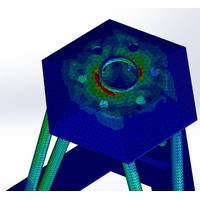
New Offshore Wind Foundation Tested
A “potentially revolutionary” new offshore wind foundation is being put to the test, says hydraulic engineering and offshore renewable energy specialist HR Wallingford.The company is working with partners Offshore Design Engineering (ODE), DNV-GL, Cambridge University and the Offshore Renewable Energy (ORE) Catapult to test and certify the Gravity Tripod, a new offshore wind foundation concept designed by Offshore Wind Logistics and Construction (OWLC).The solution, which is currently being subjected to extensive physical model testing, is intended to help keep costs down as offshore wind
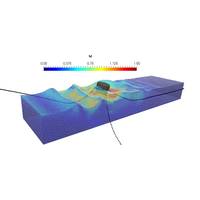
New Tools Optimize the Design of Floating Renewable Energy Devices
New research at HR Wallingford in collaboration with the Coastal and Hydraulics Laboratory (CHL) in the U.S., has developed a toolkit that can be used to optimize the design of floating offshore renewable energy devices, by accurately simulating the response of these floating structures under realistic sea states.A variety of concepts for floating offshore renewable energy devices is under development around the world, and each one presents its own challenges. This is not only due to the marine environments in which the devices may be placed, where they will frequently be exposed to significant wave
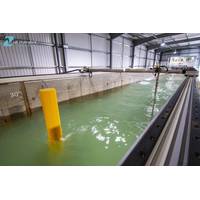
Researchers Set Out to Future-proof Offshore Wind Turbine Monopiles
impacts of climate change.'The effort, part of PROTEUS, an EU-funded Hydralab+ project, will see leading scour researchers from Ghent University, Leibniz University Hannover and the University of Porto, alongside IMDC nv and the Department of Mobility and Public Works (Belgium), collaborate at HR Wallingford’s Fast Flow Facility (FFF).PROTEUS, which stands for the ‘PRotection of Offshore wind Turbine monopilEs against Scouring’ will facilitate the conducting of a series of large scale experiments over a seven-week period in the FFF flume at HR Wallingford’s U.K. physical modelling

The Art of Coastal Engineering in the Louvre Abu Dhabi
2017, has been described as floating on the waters of the Gulf. This effect, part of the architectural vision of its award-winning architect, Jean Nouvel, who has created a museum-city in the sea, is fashioned by having water levels lying close to the line of sight. In its Oxfordshire laboratories, HR Wallingford created a 3D physical model of the museum which could accurately reproduce the hydrodynamics of the proposed site to allow for collaborative working between Architect and Coastal Engineer to optimise the architectural design. The unique design of the flagship museum – portrayed by the
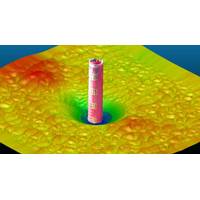
Learn to Assess Marine Scour Risk
to develop offshore renewable resources has emphasized the importance of assessing the scour hazard for marine assets such as foundation structures and cabling. There is a pressing need to better understand the processes of scour and erosion, particularly as foundation structures become more complex. HR Wallingford has created a new Marine Scour Course which explores the theories and methods for analyzing scour for a range of marine environments. The course content covers an introduction to scour hazard assessment for different marine soils, how to estimate scour at marine structures, including
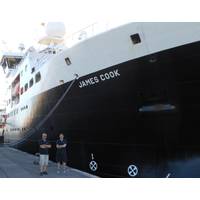
Researchers Investigate Mineral Deposits in the Deep Ocean
On 28 October 2016, the Royal Research ship (RRS) James Cook embarked on an expedition to discover new sources of the rare metals critical for low carbon technologies. HR Wallingford scientists, Jon Taylor and Neil Crossouard are on board the research vessel as it heads south west from the Canary Islands to the Tropic Sea mount, where a forty day investigation will use robotic submarines, autonomous seafloor instruments and drilling to answer questions about what controls the formation of marine mineral deposits on the floor of the North East Atlantic. E-tech elements, such as cobalt and tellurium
Rapaport Returns to OceanWise
customers across the world in a timely manner.” Rapaport rejoins OceanWise from Teledyne Caris, where he managed the development of Caris’ web server software, Spatial Fusion Enterprise. He previously worked with the OceanWise team, initially at SeaZone Solutions, then at HR Wallingford in the U.K. Rapaport assisted in drafting the ISO 19100 based discovery metadata standard for the U.K., and helped develop the metadata management tool, Metadata Maestro, for the U.K. Marine Environmental Data and Information Network (MEDIN). OceanWise said Rapaport’s appointment
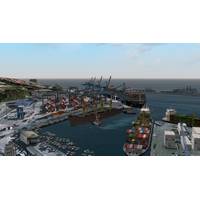
Reducing the Costs of Port and Terminal Ops
to depressed investment worldwide, particularly in energy and mining activity. The international ports and terminals sector forms an important part of the infrastructure supporting these activities. As the sector is exposed to restraints on investment, the emphasis is on reducing in operating cost. HR Wallingford advises clients on how their activities interface with the water environment. So how are we playing our part in helping clients reduce the costs of their port and terminal operations? Tom Matthewson and Iain Gunn explain how we help our clients to reduce costs by optimising the port operations


 February 2025
February 2025





